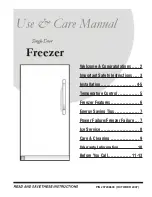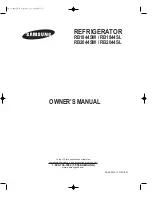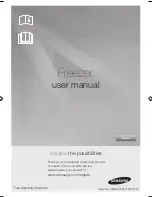
13
FREEZING OF FRESH FOODS
•
Place foods to be frozen in direct contact with
the walls of the freezer, as shown in the
adjacent figure:
A) - foods to be frozen,
B) - foods already frozen.
•
Avoid placing foods to be frozen in direct
contact with food already frozen.
•
For best and fastest freezing, foods should
be split into small portions; this will also be
useful when the frozen items are to be used
.
For storing fresh frozen foods, refer to the
adjacent table.
CLASSIFICATION OF FROZEN FOODS
Put the frozen products into the freezer and
classify them.
The storage date should be indicated on the
packs, to allow use within expiry dates.
Do not obstruct proper door closure when storing
food to be frozen.
Do not store food beyond the storing limit line in
the models in which the line is provided - see
figure C in the chapter “Freezing food”.
ADVICE FOR STORING FROZEN FOOD
When purchasing frozen food products:
•
ensure that the packaging is not damaged
(frozen food in damaged packaging may
have deteriorated). If the package is swollen
or has damp patches, it may not have been
stored under optimal conditions and
defrosting may have already begun.
•
When shopping, leave frozen food
purchases until last and transport the
products in a thermally insulated cool bag.
•
Once at home, place the frozen foods
immediately in the freezer.
•
Avoid, or reduce temperature variations to
the minimum. Respect the best-before date
on the package.
•
Always observe the storage information on
the package.
Note:
Eat fully or partially defrosted foods
immediately. Do not refreeze unless the food
is cooked after it has thawed. Once cooked,
the food can be refrozen.
If there is a long power failure:
•
do not open the freezer lid except to place
ice packs (if available) over the frozen
foods on the right and left of the freezer.
This will slow down the temperature
increase speed.
FREEZING FOOD
FOOD STORAGE
MONTHS
FOOD
42000BGB.fm5 Page 13 Tuesday, December 21, 1999 3:41 PM


























